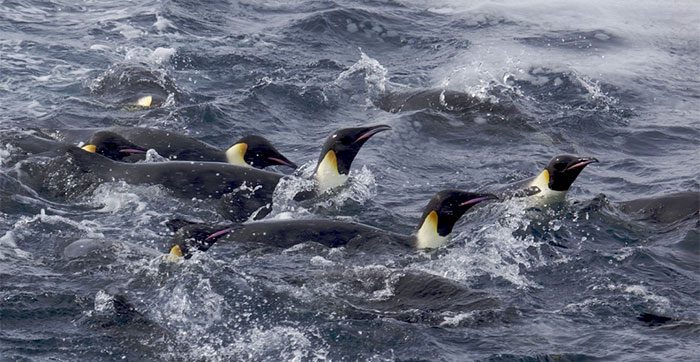For the first time, a devastating event concerning Emperor Penguins has been widely reported; they are unable to breed due to climate change.
The Emperor Penguin (scientific name: Aptenodytes forsteri) is the largest and heaviest species among all living penguins and is endemic to Antarctica.

The Emperor Penguin is an iconic species of Antarctica. (Photo: Getty).
This species has long been renowned for the arduous journeys undertaken by both male and female penguins each year to mate and care for their young.
On average, each year, Emperor Penguins must travel approximately 50 to 120 kilometers across the ice to reach their breeding grounds, where thousands of individuals gather. Here, the females lay a single egg. Afterward, the male takes on the responsibility of incubating the egg while the female goes to sea to hunt for food.
However, last summer, four out of five Emperor Penguin populations in the Bellingshausen Sea experienced breeding failures. The cause was climate change leading to the loss of sea ice in Antarctica, severely impacting the penguins’ livelihoods.
Satellite images reveal a heartbreaking reality: not a single chick survived in those locations. “We have never seen Emperor Penguins unable to breed on such a scale,” said Peter Fretwell, a geologist from the UK.
“The loss of sea ice during the summer in Antarctica makes it very difficult for the penguins to survive.”

The Emperor Penguin faced a failed breeding season due to climate change. (Photo: Earth).
This marks the first time a catastrophic event concerning Emperor Penguins has been documented on such a large scale, as they are unable to breed due to climate change.
If the loss of sea ice due to climate change continues, scientists warn that over 90% of Emperor Penguin populations could face extinction by the end of the 21st century.
“We know that Emperor Penguins are very vulnerable under warming climate conditions,” said physicist Jeremy Wilkinson from the British Antarctic Survey.
“Current scientific evidence indicates that extreme sea ice loss events like this will become more frequent and widespread.”
Climate change is causing alarming levels of sea ice loss. Scientists predict that sea ice could completely disappear in the Arctic by 2030.
Antarctica has also recorded the four regions with the most significant sea ice reductions since 2016. Some areas, such as the Bellingshausen Sea located on the western Antarctic Peninsula, have seen their sea ice extent drop to 0%.


















































